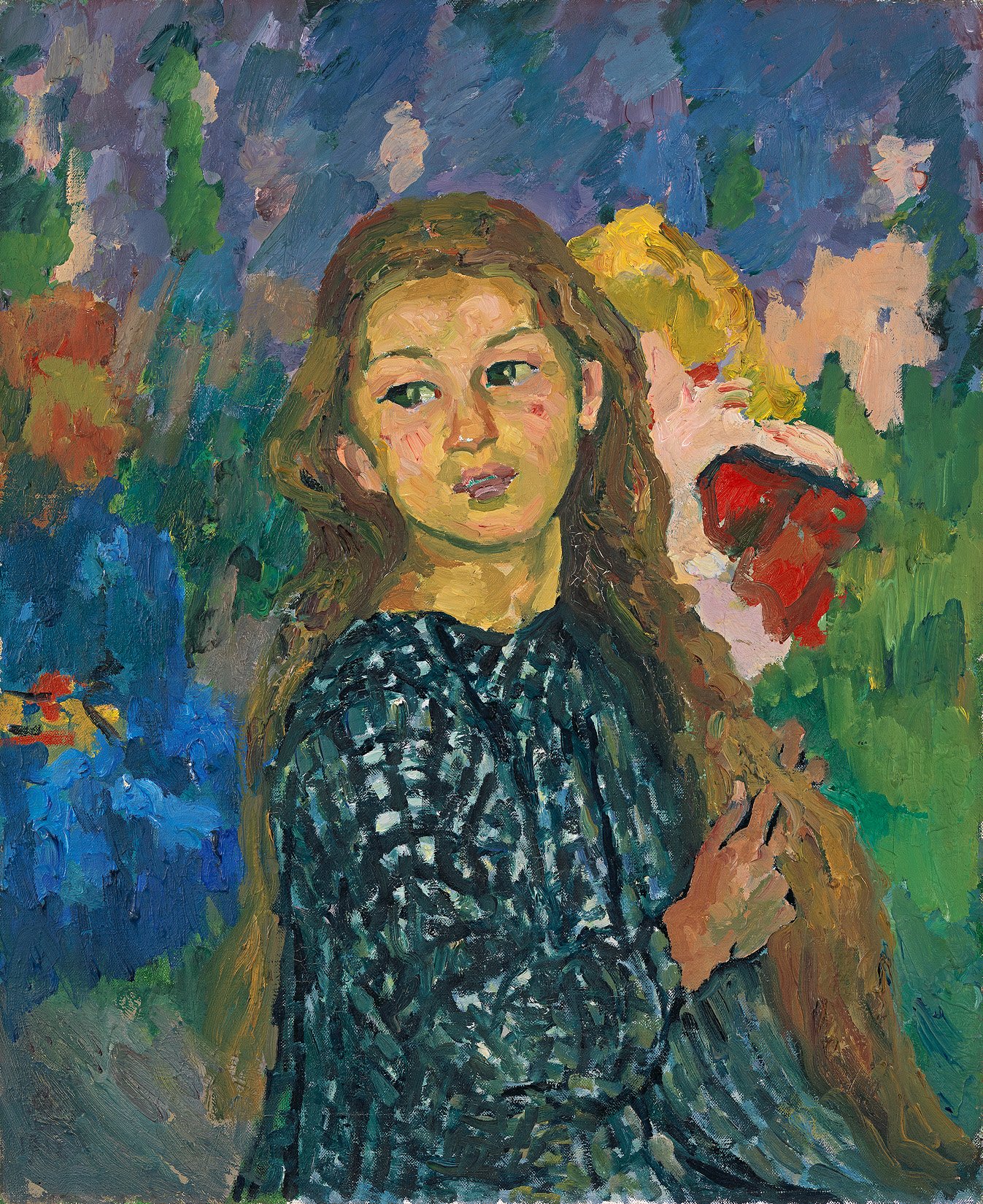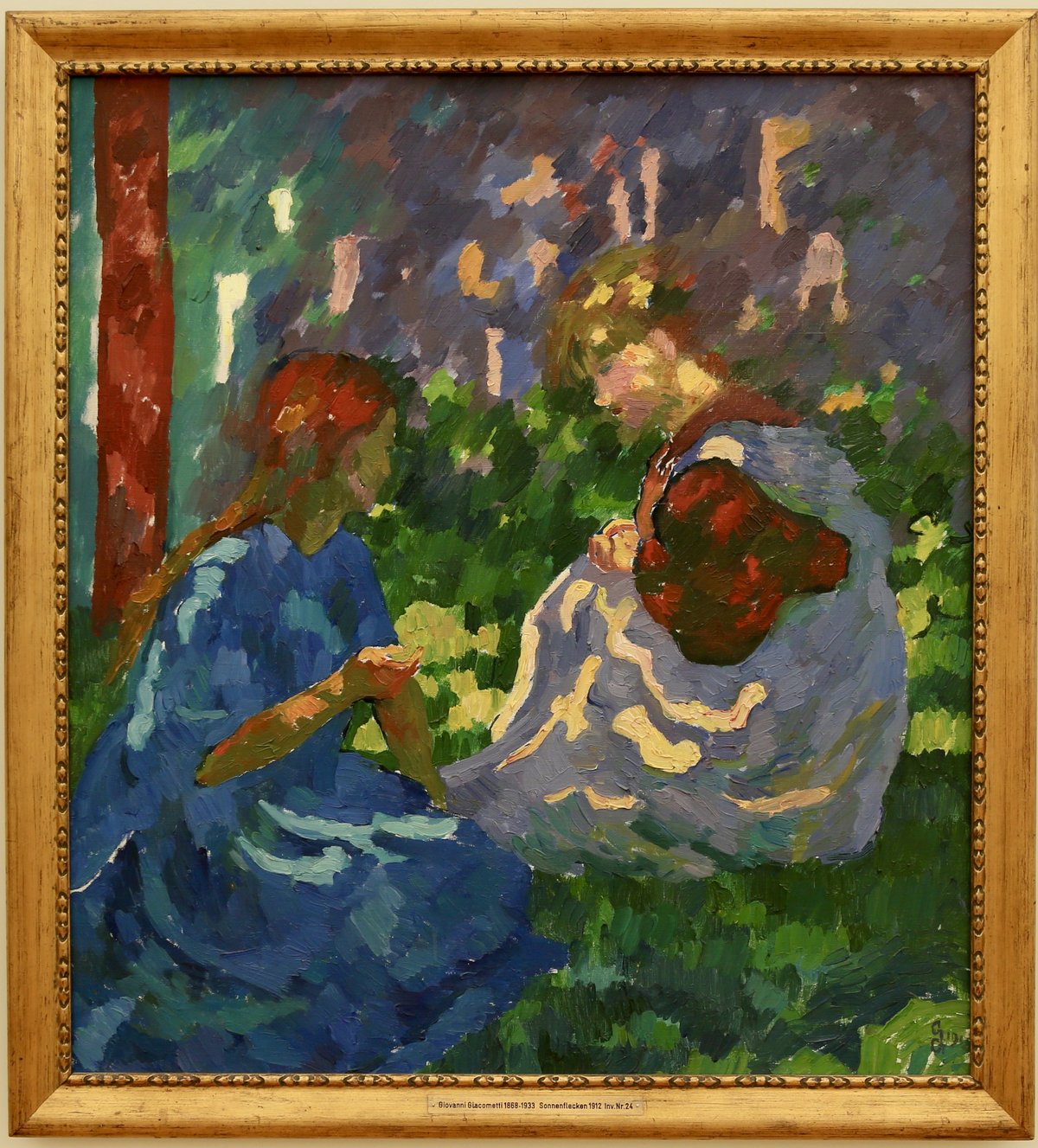Giovanni Giacometti
Portrait of Ottilia Giacometti, 1912

Giovanni Giacometti
Portrait of Ottilia Giacometti, 1912
Kunst Museum Winterthur, Stiftung Oskar Reinhart, Ankauf, 1936
Foto: SIK-ISEA, Zürich (Philipp Hitz)
Giovanni Giacometti, the father of sculptor Alberto Giacometti was, together with Cuno Amiet, one of the first Swiss artists to take up the modern French trends of Impressionism, Post-Impressionism, and Fauvism and make them relevant for the Swiss art scene. In 1912, Giacometti painted a portrait of his then eight-year-old daughter Ottilia in the spirit of this Swiss colorism. She was born in Stampa on May 31st, 1904, as the third child and only daughter of the family. After a short but formative period of study in Paris, Giacometti had set up a studio in the seclusion of the Bregaglia Valley, where he found his motifs in a natural limitation to his own immediate living environment. Alongside the landscape and the people of the Engadine, his family – his parents, wife, and children – were to a certain extent the most intimate circles of motifs of his work. The artist testified to this in a letter in which he wrote: «I enjoyed the happiness of domestic family life, surrounded by my children, who are my companions by now. My children live in my paintings, and my biography is written in my paintings».
In the portrait of his daughter Ottilia, Giacometti has almost completely reduced the spatiality in favour of a powerful colourfulness that reveals the study of his great role models Cézanne, Gauguin, and van Gogh. The figure of the girl in the white checked Prussian-blue dress is strongly interwoven with the coloured background. Only the face, framed by long brown hair and with large green-blue eyes, remains as a closed form. Behind Ottilia, pastose patches of colour in green, red, blue, yellow, and violet vibrate, barely revealing that the girl is standing in front of a painting. At any rate, this is suggested by a comparison with Luce e ombra, also created in 1912 and very similar in colour. Here, two children sit on the forest floor, surrounded by coloured patches of light and shadow. In our portrait, the two can be seen to the left and right of Ottilia: on the left, overlapping the edge of the picture, is the red-haired child in the blue dress and on the right, largely concealed by the main figure, the fair-haired child in the white strap dress with red sleeves. In this portrait of his daughter, Giacometti was not interested in creating a precise likeness of the painting Luce e ombra. Rather, he designed it as a two-dimensional, decorative background in the spirit of his lively colour painting, thus thematizing his main painterly themes – his interest in light and colour.

Giovanni Giacometti, Light and shadow II, 1912
Bündner Kunstmuseum, Chur


